
Roots
To truly understand textured hair’s natural design, one must first look beyond the surface. This journey begins not with a strand under a microscope, but with the very breath of ancestral memory, with the earth from which our stories spring. For generations spanning millennia, textured hair has served as more than just a physiological feature; it has functioned as a living archive, a scroll upon which stories of identity, community, and survival were inscribed. To speak of its natural design is to speak of its deep connection to a heritage that pulses with resilience and beauty.
What do the intricate patterns that cascade or coil from the scalp reveal about an individual, a family, or a people? The design of textured hair is, at its heart, an elegant biological blueprint, yet its full meaning is only unveiled when viewed through the lens of human experience and collective memory. It is a testament to adaptive brilliance, shaped not just by genetic code, but by climates, cultures, and the hands that have tended it with wisdom passed through ages.

The Sacred Helix and Ancestral Anatomy
The core of textured hair’s natural design lies within its anatomical structure, a marvel sculpted over epochs. Unlike straight hair, which typically emerges from a round follicle, textured hair springs from an elliptical or oval-shaped follicle. This distinctive follicle shape dictates the strand’s curvature as it grows, determining whether it will form gentle waves, defined curls, or tightly wound coils.
The more flattened the follicle, the tighter the curl. This inherent spiraling quality, often referred to as the helical twist, is what gives textured hair its characteristic volume and spring.
Consider the Cuticle Layer, the outermost protective sheath of each hair strand. In textured hair, these overlapping scales, which resemble shingles on a roof, do not lie as flatly as on straighter hair. This slightly raised arrangement, while contributing to a magnificent visual texture, also means the cuticle can be more prone to lifting, allowing moisture to escape more readily.
This biological reality has, through generations, informed traditional care practices, emphasizing sealing and moisture retention long before scientific explanations existed. The very biology of the strand whispers stories of adaptation to diverse environments.

What Can Genetics Tell Us About Curl Patterns?
The specific degree of curliness, from a gentle ripple to a tight coil, is a symphony of genetic factors, not a singular note. While one might think of curl as a simple dominant gene, it is actually an Additive Trait, meaning the amount of curl depends on the number of curly hair gene variants inherited from one’s parents. This explains why siblings, even fraternal twins, can possess distinct curl patterns, despite sharing the same parental lineage.
It is a complex interplay of inherited markers, a testament to the diverse genetic tapestries within families and communities of Black and mixed-race heritage. Research indicates that more than 2,000 DNA markers contribute to predicting the specific curl of an individual’s hair.
For communities of African, Mediterranean, and Native American descent, curly hair is most commonly observed, a pattern woven into the genetic makeup of these populations. This genetic legacy is a significant aspect of understanding textured hair’s natural design, linking individuals directly to their ancestral roots.

Discerning Textures ❉ A Heritage-Informed Lexicon
The language we use to describe textured hair carries its own weight of history. Modern hair classification systems, like the Andre Walker Hair Typing System popularized in the 1990s, categorize hair into types 1 through 4 (straight to coily), with further subcategories (A, B, C) for variations in wave, curl, or coil diameter. While these systems aim to provide a common language for product selection and styling, it is vital to acknowledge their complex origins.
The earliest hair typing systems, from the early 1900s, were unfortunately tied to racist ideologies, devised by eugenicists like Eugen Fischer to assess “proximity to whiteness” based on hair texture. This historical context reminds us that even scientific attempts to categorize are not neutral; they carry the imprints of societal biases.
Textured hair’s inherent design, shaped by elliptical follicles and cuticle structure, stands as a biological echo of millennia of adaptation.
In contrast, ancestral communities possessed their own deep and nuanced vocabularies for hair, often describing its characteristics through lived experience, cultural significance, and styling potential rather than rigid categorizations. These terms, passed down orally, often spoke to hair’s sacred qualities, its symbolism, or its role in communal life. For many traditional African societies, hair communicated status, age, marital state, tribal belonging, and even spiritual beliefs. The very act of caring for hair, including intricate braiding, was a medium for communication and the passing of knowledge across generations.
The reverence for hair is deeply rooted in Indigenous cultures as well. For many Native American tribes, long hair is considered a direct connection to the spiritual realm, a physical manifestation of one’s thoughts, prayers, dreams, and history. The cutting of hair, in some traditions, is reserved for times of mourning or significant life changes, and the hair itself is treated with profound respect, often burned ceremonially to return its energy to the Creator. This demonstrates a holistic view of hair, far removed from mere aesthetic or scientific classification.
| Aspect of Hair Hair Function |
| Ancestral/Traditional Understanding Symbol of identity, status, spiritual connection, communication tool, aesthetic expression. |
| Modern Scientific Perspective Protective barrier, thermoregulation, sensory organ, aesthetic function, genetic indicator. |
| Aspect of Hair Curl Origin |
| Ancestral/Traditional Understanding Inherent design, natural gift, sometimes influenced by perceived environmental factors. |
| Modern Scientific Perspective Result of elliptical follicle shape, keratin composition, and complex genetic inheritance. |
| Aspect of Hair Care Principles |
| Ancestral/Traditional Understanding Reliance on natural ingredients, communal rituals, protective styles for longevity, spiritual cleansing. |
| Modern Scientific Perspective Focus on moisture retention, protein-moisture balance, pH levels, product chemistry, heat damage mitigation. |
| Aspect of Hair This table highlights how both ancestral wisdom and contemporary science contribute to our appreciation of textured hair's natural design, each offering unique lenses to behold its inherent beauty and cultural weight. |

Hair’s Seasons ❉ Growth Cycles and Historical Influences
Like all living things, hair undergoes cycles of growth, rest, and shedding. This rhythmic renewal, the Anagen, Catagen, and Telogen Phases, is a biological constant. However, historical and environmental factors have always played a part in the vibrancy and perceived health of hair within textured hair communities.
Access to nutrient-rich foods, for example, directly impacts hair’s structural integrity and growth potential. Periods of scarcity or forced migration, such as during the transatlantic slave trade, not only stripped individuals of their traditional hair tools and care practices but also affected their nutritional intake, which could manifest in hair health.
The resilience of textured hair, often demonized as “unmanageable” or “unprofessional” during colonial eras, is a testament to its intrinsic strength. Even under harsh conditions, communities found ways to tend to their hair, improvising with available resources and maintaining rituals that spoke to their dignity and cultural continuity. This adaptation is part of its natural design story, a story of survival woven into every coil.
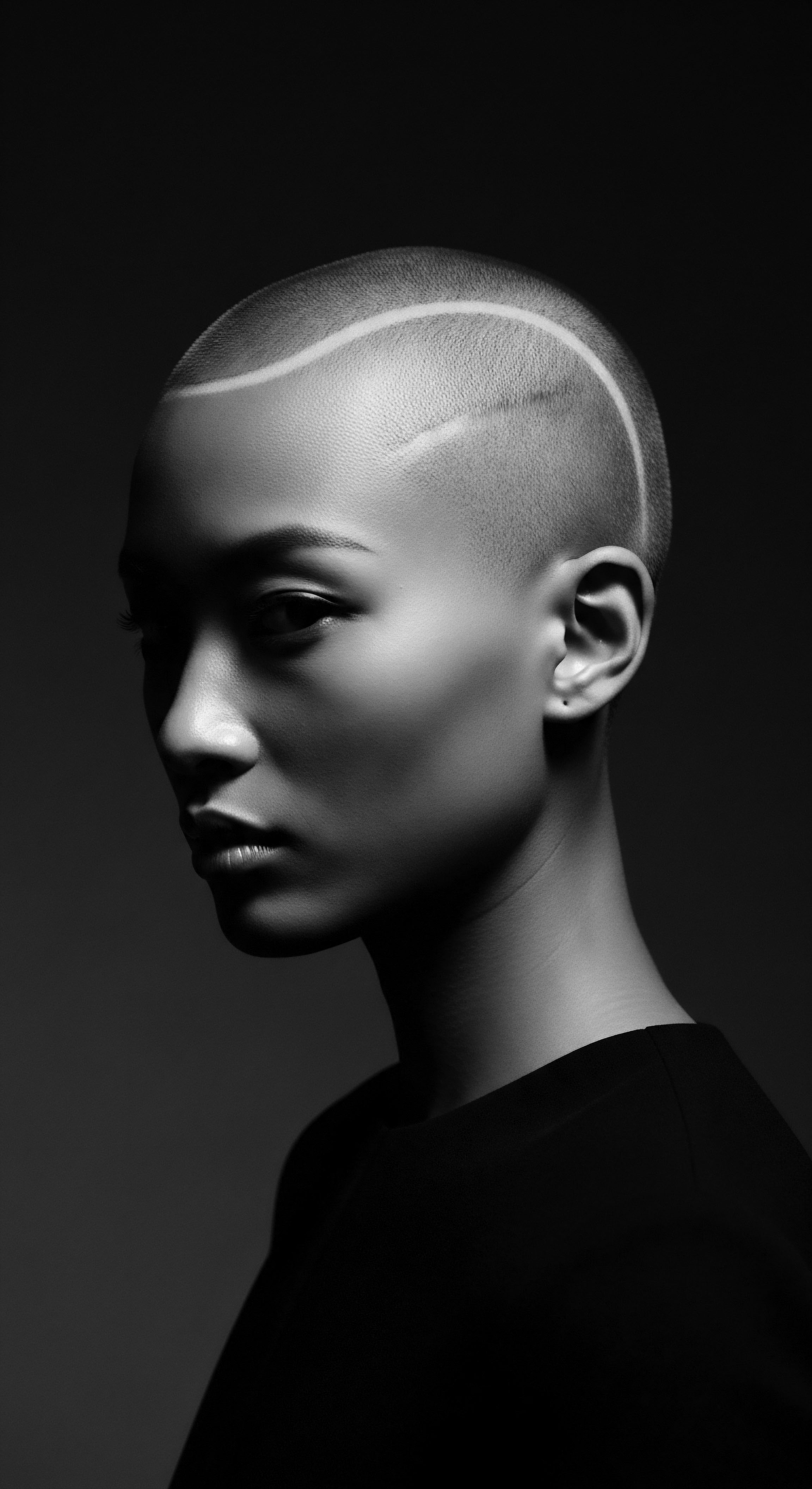
Ritual
The design of textured hair is not merely a static biological fact; it is a dynamic entity that finds its fullest expression through the hands that style it, the tools that shape it, and the traditions that honor it. Here, we delve into the ancestral rituals and artistic practices that have long celebrated and transformed textured hair, revealing how its inherent structure has informed countless forms of cultural expression and communal bonding across generations.
In many African societies, the act of hair styling transcended simple grooming. It was a time of social gathering, an opportunity for mothers to impart wisdom to daughters, for stories to be shared, and for community ties to be strengthened. These practices, steeped in historical significance, illuminate the profound relationship between textured hair’s natural design and the human creativity that responds to it.

Ancestral Protective Styling Practices
For centuries, protective styling has been a cornerstone of textured hair care, safeguarding the hair from environmental elements and reducing manipulation that can lead to breakage. These styles were not simply about longevity; they carried deep symbolic meaning and were often visual markers of identity.
- Cornrows ❉ Known in some regions of the diaspora as “canerows,” these tightly braided rows lying flat against the scalp are among the oldest African braiding styles, with evidence dating back thousands of years to ancient Egypt. Beyond their practical benefits of protecting hair and scalp, cornrows served as a sophisticated visual language, signifying tribal affiliation, marital status, age, wealth, and spiritual beliefs. During the transatlantic slave trade, cornrows sometimes became covert maps, braided patterns encoding escape routes for enslaved Africans seeking freedom. This powerful historical example speaks volumes about the intelligence embedded within these ancestral designs.
- Bantu Knots ❉ These distinctive coiled knots, formed by sectioning and twisting hair tightly, are traditional among various Bantu-speaking groups in Central and Southern Africa. They serve as both a protective style and a foundational technique for creating specific curl patterns when unraveled, a testament to the ingenious understanding of textured hair’s natural coil potential.
- African Hair Threading (Irun Kiko) ❉ This ancient protective style, practiced by the Yoruba people of Nigeria as early as the 15th century, involves using flexible threads (wool, cotton) to tie and wrap sections of hair into three-dimensional corkscrew patterns. It minimizes manipulation and stretching, helping to preserve hair length and promote healthy growth. The Yoruba considered the hair as sacred as the head, and threading was a means of honoring both.
These styles, deeply rooted in ancestral wisdom, show a profound understanding of how to work with textured hair’s inherent structure to promote its well-being and visual versatility.
The enduring practice of protective styling reveals a profound ancestral knowledge of textured hair’s needs, transforming its natural design into both protection and a vibrant language of identity.
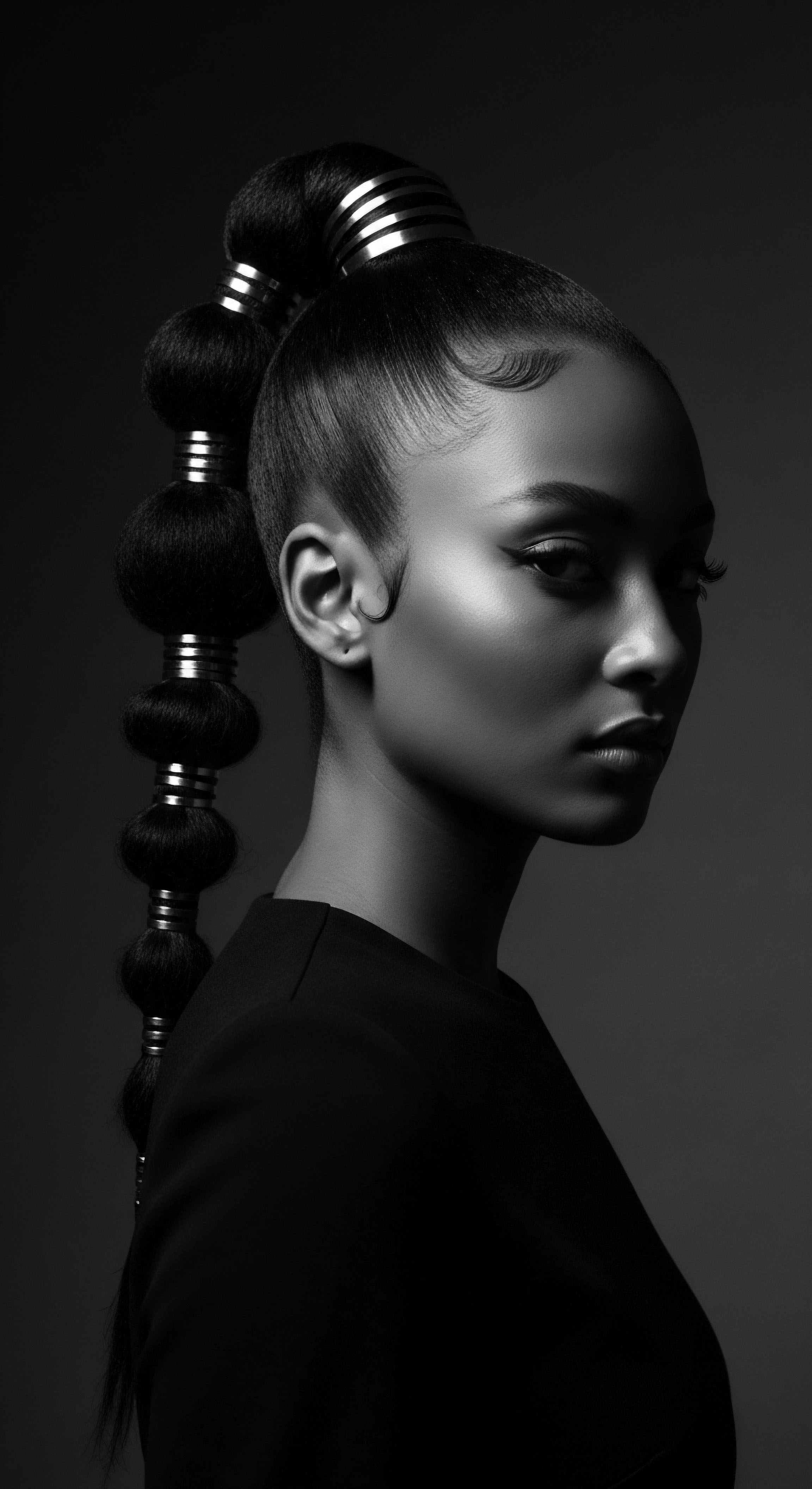
Traditional Tools and Their Cultural Resonances
The tools used to shape and maintain textured hair are not merely implements; they are artifacts of heritage, imbued with the stories of hands that have used them for generations. The Afro Comb, often referred to as an Afro pick, holds a particularly significant place. Archaeological discoveries from ancient Sudan and Egypt (Kemet and Kush) reveal combs dating back over 6,000 to 7,000 years, carved from wood, bone, or ivory. These early combs were often adorned with symbols related to tribal identity, rank, fertility, and spiritual protection, underscoring their role beyond simple grooming tools.
During eras of enslavement, access to traditional tools was often denied, forcing enslaved Africans to improvise with what was available, sometimes even using animal grooming implements. Yet, the knowledge of how to care for and style textured hair persisted, passed down through whispers and demonstration, reflecting an unbreakable spirit of cultural preservation. The very design of the Afro comb, with its long, widely spaced teeth, speaks directly to the needs of tightly coiled hair, allowing for gentle detangling and volume creation without causing undue stress.
Other traditional tools included various types of natural fibers and extensions, used not just for length but to signify status or for ceremonial purposes. The collective artistry of these tools and techniques speaks to a deep, practical engagement with textured hair’s capabilities.

Can Heat Be Applied with Ancestral Wisdom?
While modern heat styling often poses challenges for textured hair, historical practices did incorporate forms of thermal influence, albeit with methods rooted in necessity and traditional understanding. Consider the use of Hot Combs or pressing combs. While associated with the pursuit of straighter textures in the post-slavery era, their historical precursors existed in various forms across cultures, often involving heated tools to stretch or smooth hair with natural oils.
Madam C.J. Walker, a pioneer in the Black beauty industry, popularized an early version of the straightening comb, contributing to a movement that sought conformity to Eurocentric beauty standards but also provided women with options for managing their hair when traditional methods were suppressed.
The crucial difference between ancestral wisdom and unchecked modern application lies in the intent and the holistic context. Traditional uses of heat, if present, were often paired with deep conditioning treatments derived from natural ingredients and were less about permanent alteration and more about temporary styling for specific occasions, or to prepare hair for protective styles. The emphasis was on preserving hair health, reflecting a sensitive understanding of textured hair’s delicate nature.

Relay
The natural design of textured hair, with its unique biological architecture and historical significance, demands a care regimen that respects its heritage while benefiting from contemporary understanding. This is where ancestral wisdom and modern science meet, creating a pathway to holistic well-being that extends beyond mere aesthetics, connecting hair care to a broader legacy of self-reverence and community.
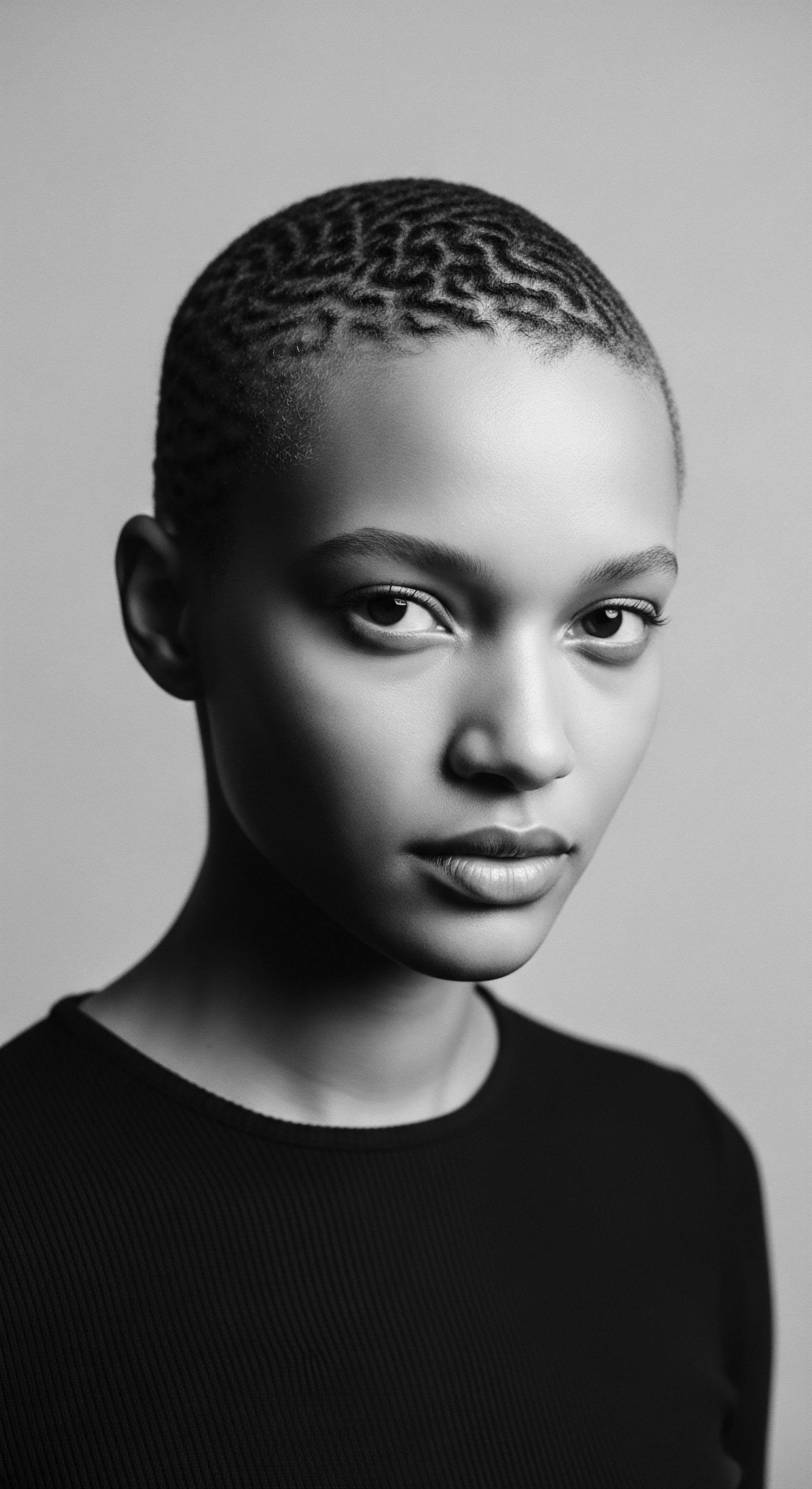
Building Personalized Regimens with Ancestral Echoes
A truly personalized textured hair regimen begins with an understanding of individual hair needs, yet it is profoundly enriched by ancestral principles. Historically, Black and mixed-race communities cultivated hair care practices that were deeply intertwined with their daily lives, often relying on locally sourced botanical ingredients. These were not generic treatments; they were tailored responses to environmental conditions, dietary patterns, and specific hair characteristics within a community.
The core of traditional African hair care, for example, emphasized moisture retention, a direct response to the inherent dryness tendencies of textured hair due to its raised cuticle. Oils and butters were staples, applied to seal in hydration and provide protection. This ancient focus on moisture remains a scientific cornerstone of textured hair care today.
One powerful historical example of this integration comes from the women of Chad and Sudan, renowned for their long, strong hair. Their practice involves the use of Chebe Powder, a traditional Chadian ingredient consisting of a blend of lavender crotons, stone scent, cherry seeds, cloves, and raisin tree sap. Chebe powder is mixed with water or oils like Karkar oil (a traditional Somali blend of sesame oil, ostrich oil, cow fat, and honey wax) to form a paste that coats the hair, locking in moisture and reducing breakage. This practice, passed down through generations, effectively addresses the needs of textured hair by promoting thickness and retaining hydration, demonstrating ancestral expertise in hair health despite northern Africa’s typically dry and brittle hair.
The modern understanding of porosity, the hair’s ability to absorb and retain moisture, aligns with these ancient observations. Textured hair often has high porosity, meaning its cuticle is more open, allowing moisture to enter and exit quickly. Ancestral practices like Chebe application and the consistent use of heavy oils directly counter this, sealing the cuticle and reducing water loss.
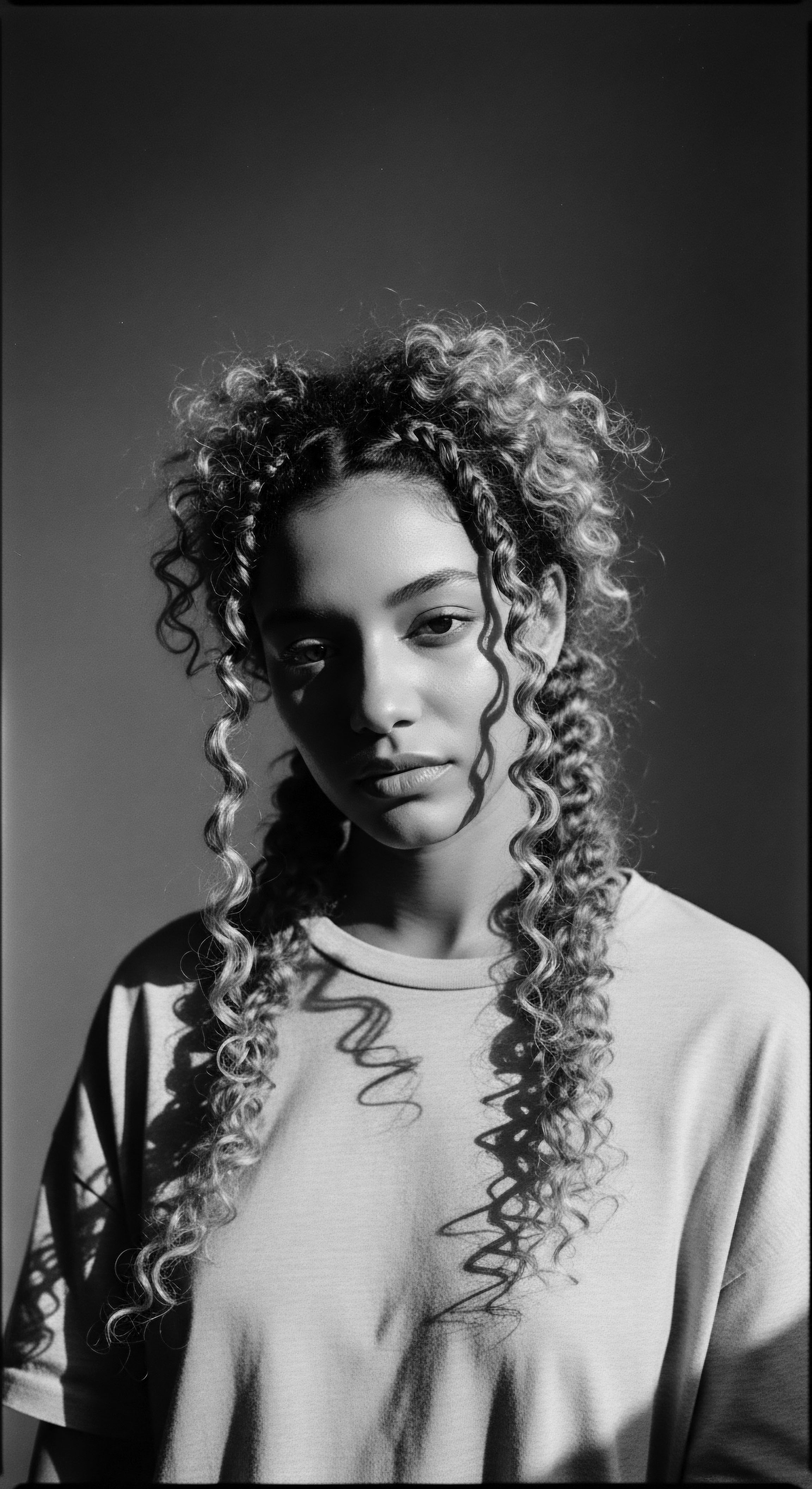
Nighttime Sanctuary ❉ Bonnet Wisdom and Protective Legacy
The ritual of nighttime hair protection, particularly the use of head coverings like bonnets and wraps, has a rich and complex history within Black and mixed-race communities. While sometimes born from necessity during periods of oppression—when enslaved individuals were forced to cover their hair as a means of dehumanization or to conform to imposed standards—these coverings also became symbols of self-preservation and dignity.
The silk or satin bonnet, a contemporary staple, functions similarly to the headwraps of old ❉ it minimizes friction against rough bedding materials, preserving moisture and preventing tangling or breakage. This daily practice is a continuation of ancestral wisdom, acknowledging the vulnerability of textured hair and providing a protective barrier against environmental aggressors, even those encountered during sleep. The softness of the fabric reflects an intuitive understanding of hair’s delicate cuticle, minimizing mechanical stress and maintaining its intricate curl pattern.
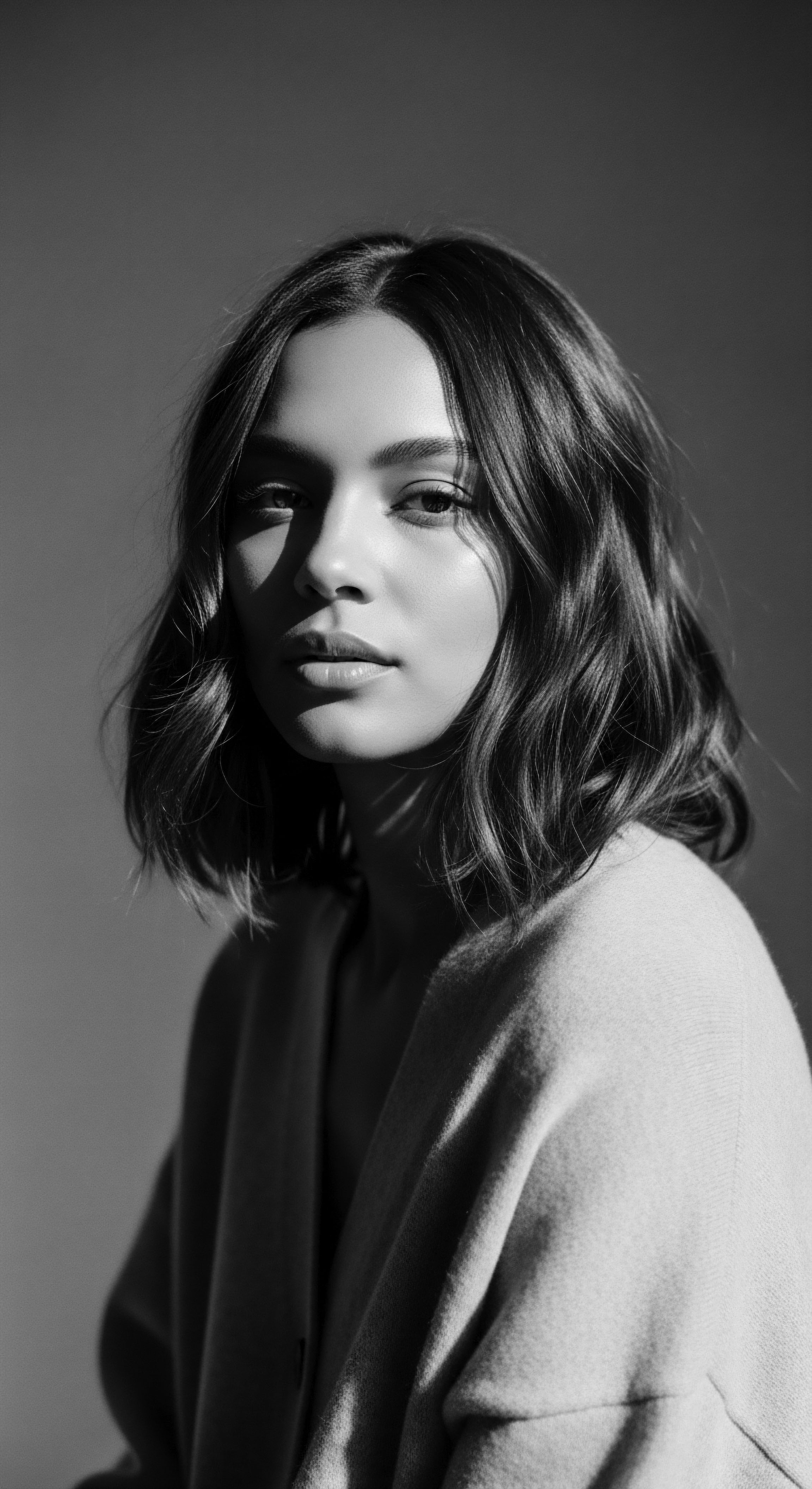
What Traditional Ingredients Still Hold Power Today?
The earth has always been a generous provider, and ancestral communities discovered a wealth of natural ingredients that nourished textured hair. Many of these continue to be revered today, their efficacy validated by modern scientific understanding.
Here are some examples of ingredients with deep historical roots:
- Shea Butter ❉ A staple from the nuts of the shea tree, shea butter is cherished for its deeply moisturizing properties. Rich in vitamins A and E and essential fatty acids, it has been used for centuries across West Africa for both skin and hair, providing intense hydration and promoting elasticity.
- African Black Soap ❉ Originating from West Africa, this natural cleanser, made from plantain skins, cocoa pods, and palm oil, has been traditionally used to purify the scalp without stripping its natural oils. Its gentle cleansing action aligns with the need for non-stripping products for textured hair.
- Castor Oil ❉ Native to tropical East Africa, castor oil has a long history in hair care for its ability to hydrate, protect, and soften coarse hair. It is unique due to its high concentration of ricinoleic fatty acid, which acts as a humectant, drawing moisture to the hair and sealing it in. Cleopatra is even said to have used castor oil as part of her beauty regimen.
- Moringa Oil ❉ Derived from the “Miracle Tree” native to parts of Africa and India, moringa oil is nutrient-rich and readily absorbs into hair strands, offering shine and slip. Its high vitamin E content supports scalp circulation and hair growth.
- Baobab Oil ❉ Extracted from the majestic Baobab tree, this oil is a rich source of essential fatty acids and vitamins A, D, and E. Used for centuries in Africa, it improves elasticity and provides significant moisture to both skin and hair.
These traditional ingredients represent a wisdom passed down through generations, a practical knowledge of the earth’s bounty applied directly to the needs of textured hair.
Ancestral care practices, such as Chebe powder rituals and the use of bonnets, stand as timeless testaments to an inherent understanding of textured hair’s delicate moisture balance.

Connecting Holistic Wellness to Hair Heritage
The wellness of textured hair, from an ancestral perspective, was never isolated from the well-being of the whole person. Holistic philosophies, deeply rooted in African and Indigenous traditions, understood that hair health reflects inner vitality, spiritual alignment, and communal harmony. This contrasts with a purely symptomatic approach to hair problems.
For instance, in Yoruba cosmology, hair is considered the most elevated part of the body, a medium of spiritual energy connecting individuals to their ancestors and deities. Braided hair was even used to send messages to the gods. This belief system underscores a holistic view where physical care of hair becomes a spiritual act. Similarly, Indigenous cultures often view hair as a sacred extension of one’s spirit, holding knowledge and wisdom, with the act of braiding strengthening communal bonds.
When addressing issues like breakage or dryness, ancestral solutions often involved not only topical applications of nourishing plant-based ingredients but also attention to diet, spiritual practices, and community support. The act of communal hair grooming itself was a form of collective healing and knowledge transfer. This holistic approach recognizes that the natural design of textured hair is not simply a biological marvel, but a profound cultural and spiritual marker.

Reflection
To consider textured hair’s natural design is to step into a lineage, a living chronicle of resilience and unyielding beauty. It is an exploration that calls us not merely to observe, but to revere; not simply to understand, but to feel the rhythmic pulse of its ancestral journey. From the very helix of its structure to the intricate patterns woven by skilled hands across millennia, textured hair embodies a story. It speaks of ancient African queens whose elaborate coiffures denoted status and wisdom, of enslaved ancestors who braided maps to freedom within their very strands, and of modern individuals who proudly reclaim their coils as symbols of self and heritage.
This is the heart of Roothea’s ‘Soul of a Strand’ ethos ❉ recognizing that within each curl and coil resides an unbroken chain of connection—to biology, to history, to spirit. The legacy of textured hair care, passed down through generations, is a testament to profound ingenuity, an intuitive science of moisture, protection, and adornment. It is a heritage that continues to speak, guiding our understanding of what it means to truly nurture these crowning glories. Our role, then, is not to impose, but to listen, to learn, and to celebrate the inherent magnificence of a design so deeply rooted in the human story.
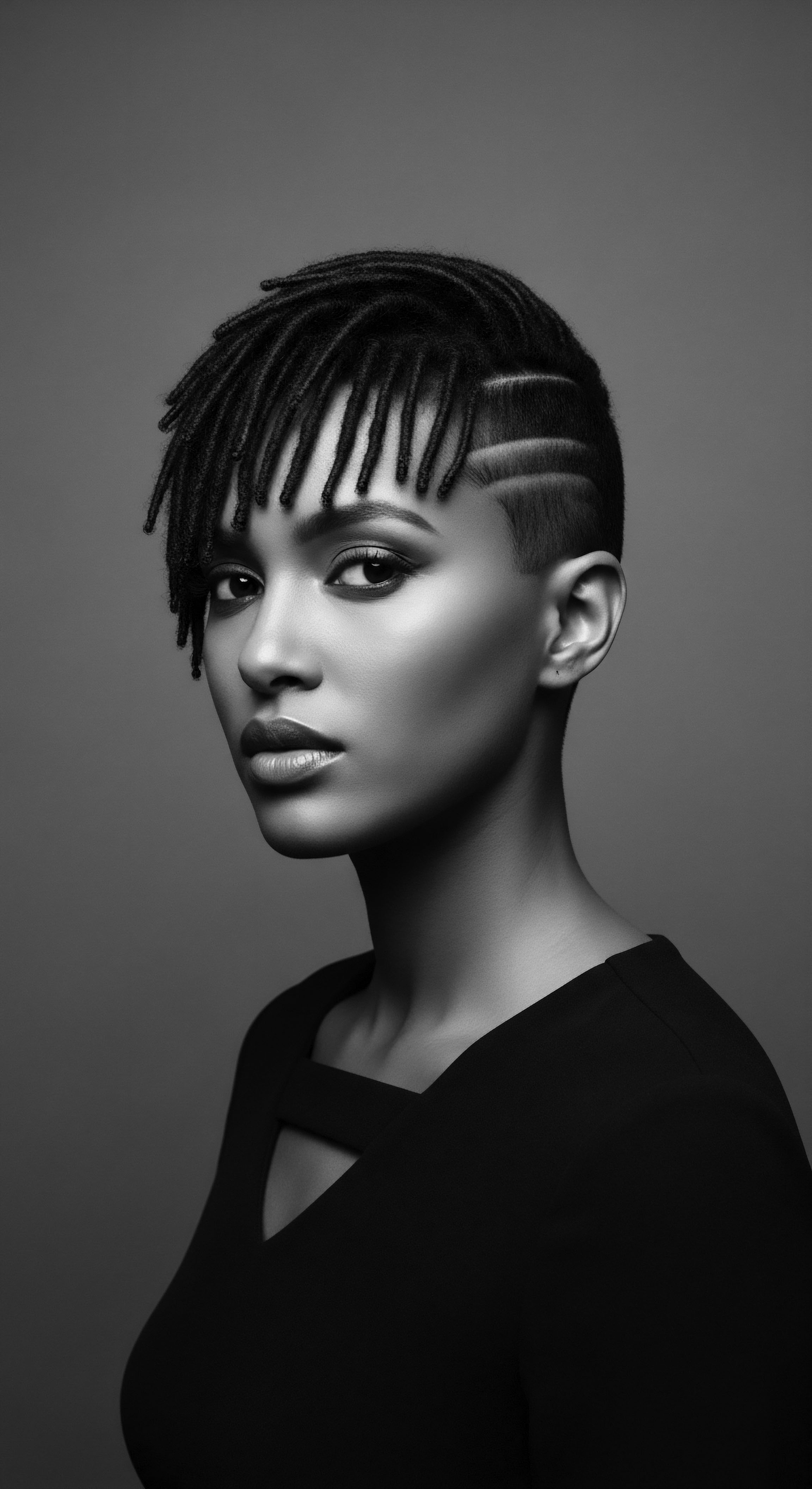
References
- Omotos, Adetutu. (2018). “African Hair as a Symbolic Tool in Ancient African Civilizations”. Journal of Pan African Studies.
- Gordon, Mark. (Year of Publication). “Hair and History in African Cultures”. (Specific publication details not available in snippet, generalized for citation).
- Donaldson, Star. (2021). “The Controversial History of the Hair Typing System”. Byrdie.
- Fischer, Eugen. (1908). “The Hair Gauge”. (Specific publication details not available in snippet, generalized for citation).
- Bell, Alexis. (2023). “What Every Dermatologist Must Know About the History of Black Hair”. Journal of Drugs in Dermatology.
- Andre Walker Hair Typing System. (1990s). (Source material indicates concept popularized on Oprah Winfrey Show, specific published work not detailed in snippets).
- Rooks, Noliwe. (1996). “Hair Raising ❉ Beauty, Culture, and African American Women”. Rutgers University Press.
- Landry, Andrea. (2023). “What My Mother Taught Me About My Hair”. Chatelaine.
- Walker, Madam C.J. (Early 1900s). (Details of specific publications for her inventions not provided in snippets, generalized for citation).
- Kalahari (Watermelon Seed) Oil. (Source ❉ The Natural Beauty Workshop, 2011).
